This post contains affiliate links, which means I may earn a commission if you purchase through those links (at no extra cost to you).
Learn How to Make Ricotta Cheese at home. It’s quick and easy: all you need is milk, lemon juice, vinegar, and salt. Above also, it’s rich, creamy, and absolutely delicious.
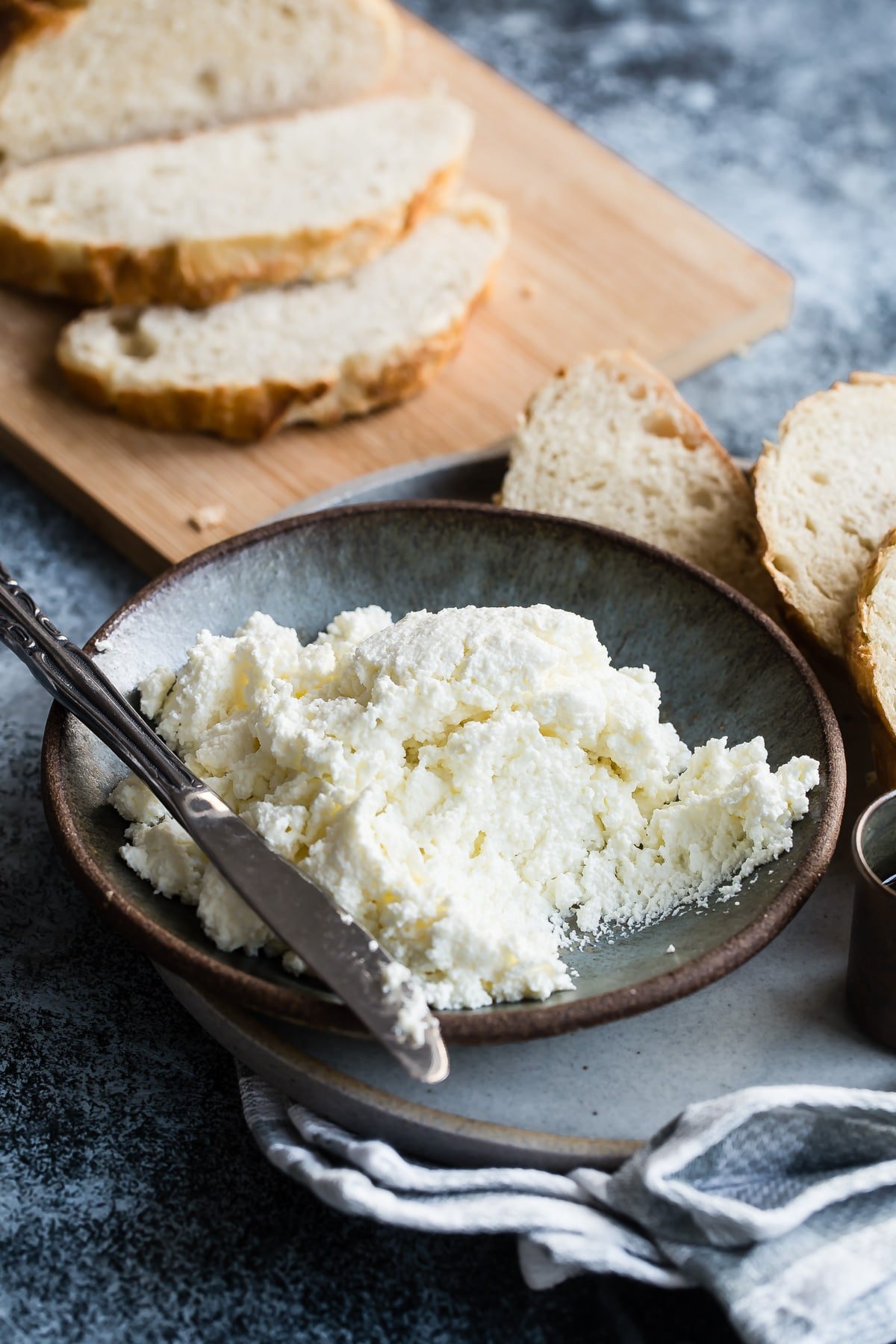
Technically, authentic ricotta cheese is made from cooked whey, which is a by-product of the cheesemaking process. However, this is a recipe for an easy milk-based ricotta, which is more like a fresh farmer’s cheese.
Homemade ricotta cheese has a wonderful flavor and works perfectly well in all sweet desserts and savory recipes. Filled pasta such as manicotti, ravioli, and lasagna taste even better with homemade ricotta. Fresh lemon ricotta pancakes make the best breakfast ever.
Or, try a dollop of ricotta on spaghetti and other simple pasta dishes, on soup, or even spoon it on toast. You can even use ricotta in place of heavy cream in some recipes. And ricotta cheesecake is as good as it sounds!
Table of Contents
Recipe ingredients
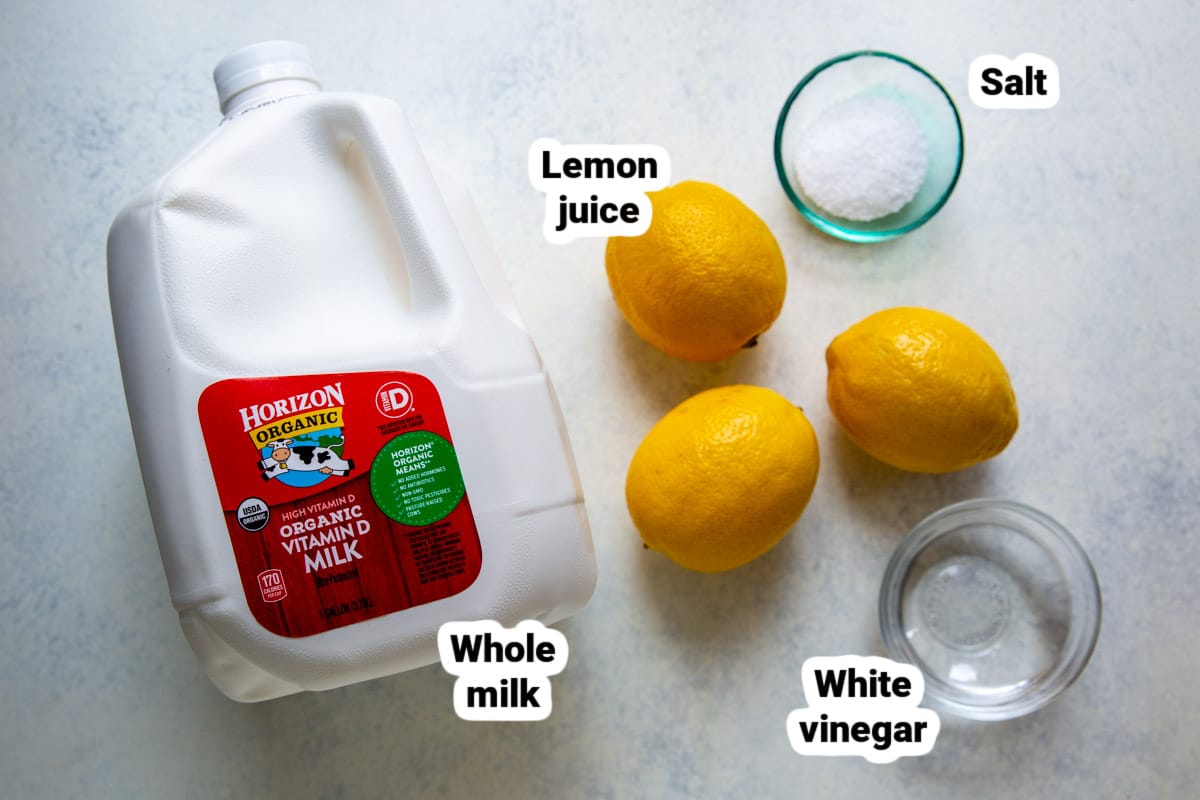
At a Glance: Here is a quick snapshot of what ingredients are in this recipe.
Please see the recipe card below for specific quantities.
Ingredient notes
- Milk: Use pasteurized (not ultra-pasteurized / UHT) whole milk. You can use milk from cows, sheep, or goats. And if you like buffalo mozzarella, you will love ricotta made from the milk of water buffalo.
- Lemon juice: Use regular lemons (do not substitute Meyer lemons; they don’t have enough acid to curdle the milk). Some cooks prefer citric acid as it curdles the milk without adding the taste of lemon.
Step-by-step instructions
- Line a colander or fine-mesh strainer with a triple layer of cheesecloth and set in the sink. In a liquid measuring cup, combine fresh lemon juice and vinegar.
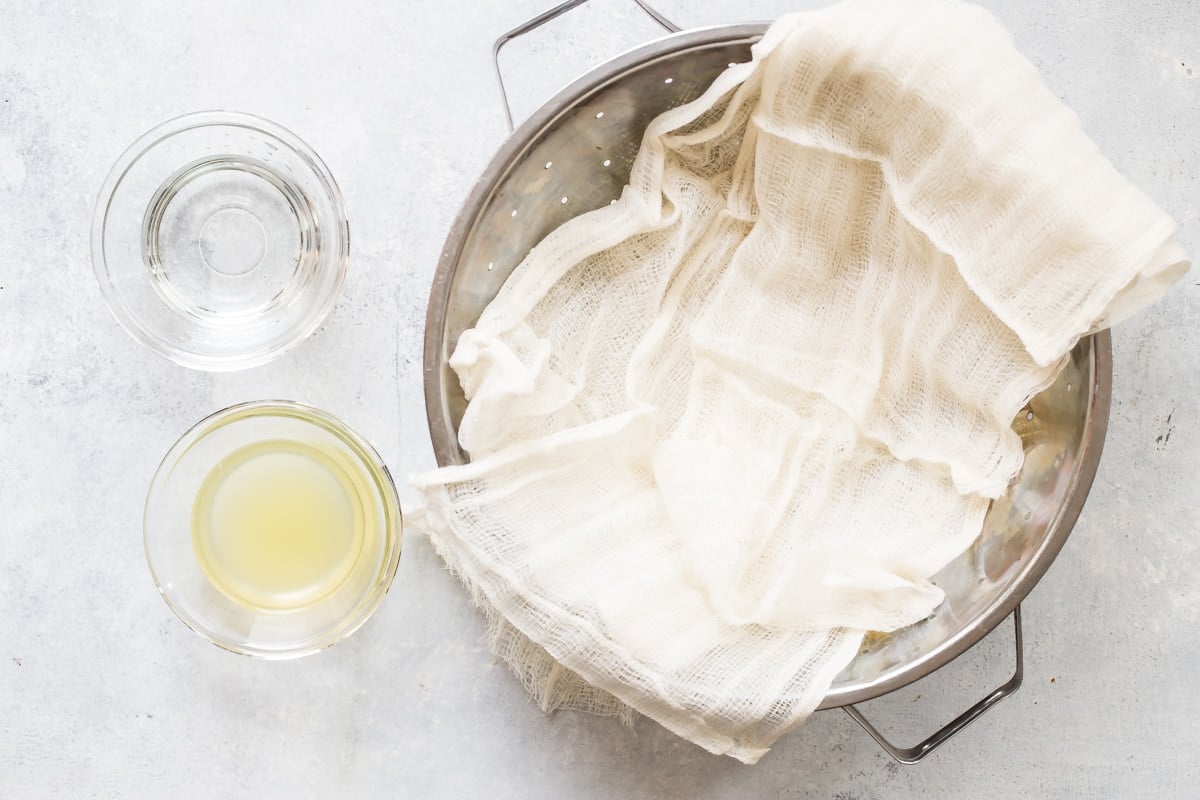
- In a Dutch oven or large pan over medium heat, heat milk and salt to 185 degrees on an instant-read thermometer (do not boil). Stir frequently with a rubber spatula to prevent scorching.

- Remove pot from heat and gently stir in lemon juice and vinegar until the mixture curdles, about 15 seconds.
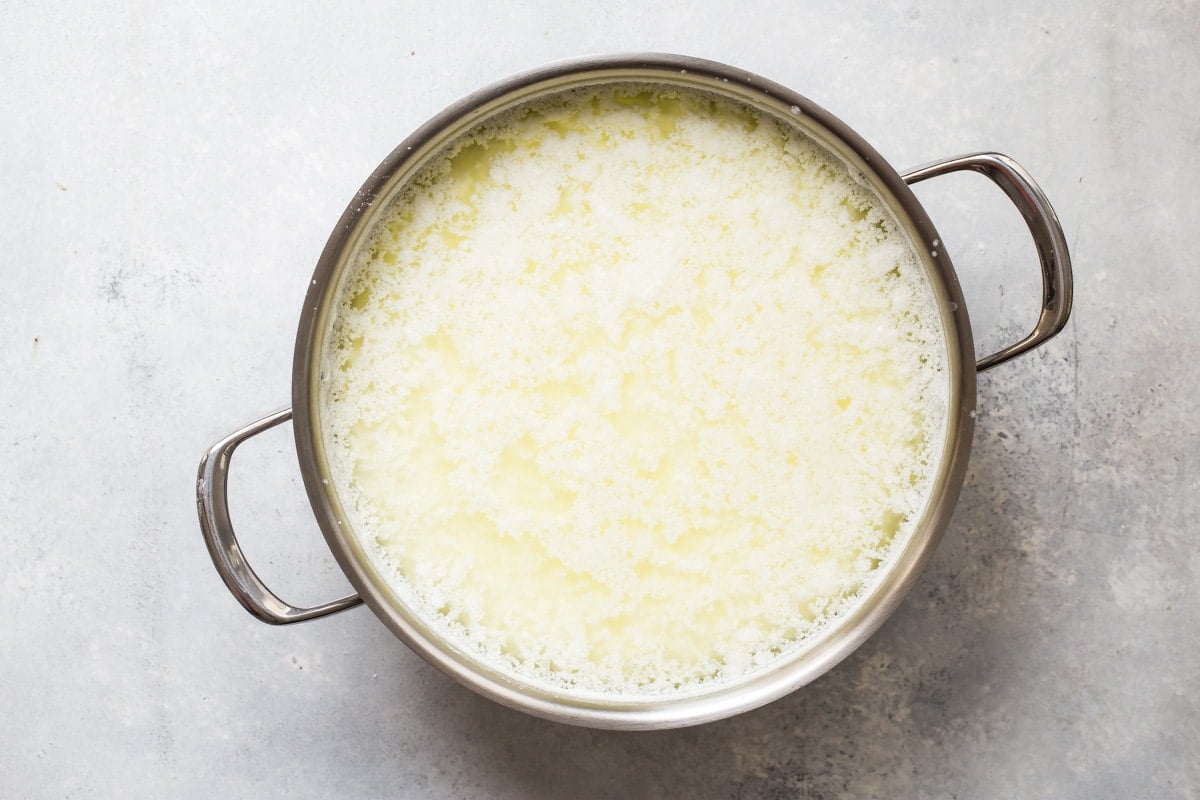
- Let rest, without stirring, until the mixture fully separates into solid curds and translucent whey, 5 to 10 minutes. If curds do not fully separate the whey looks milky, stir in 1 tablespoon of vinegar and let sit 2 to 3 minutes longer. Repeat this process until curds separate.
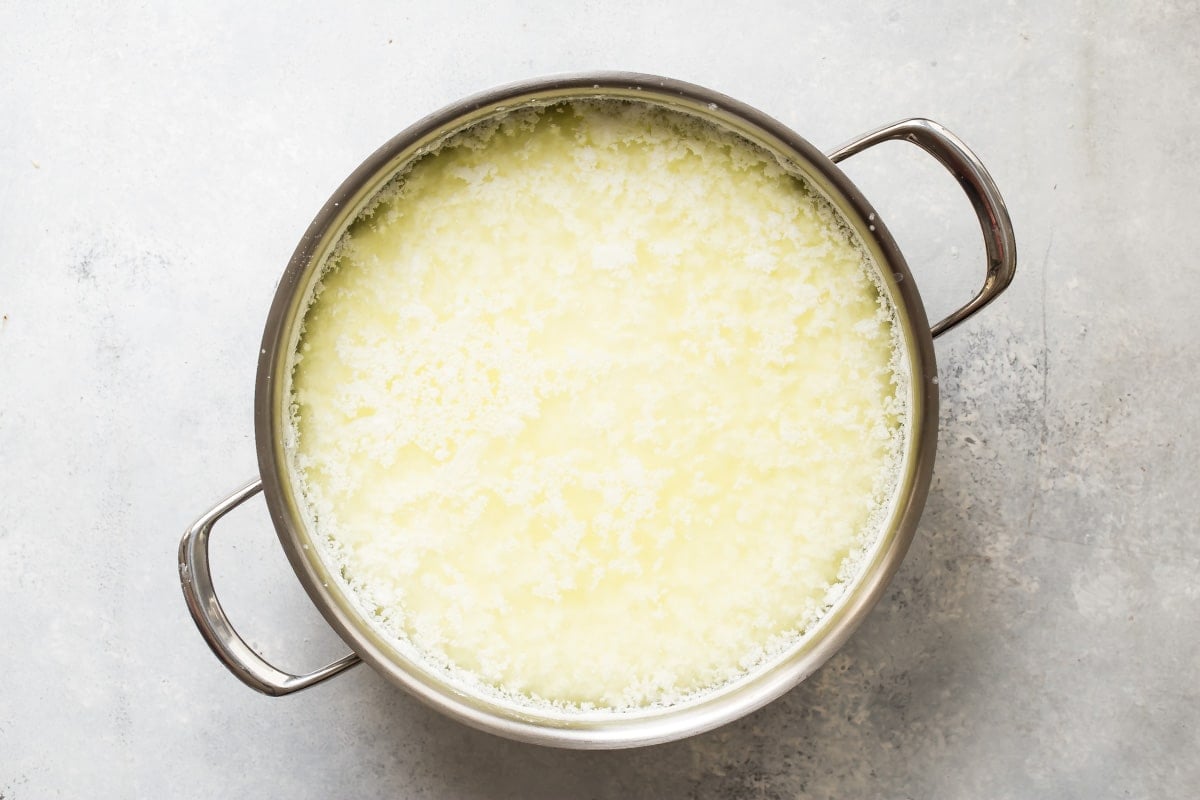
- Gently pour mixture into prepared colander. Let rest, without moving, until whey has drained from edges of cheese but the center is still very moist, about 8 minutes. For a drier texture, let it drain even longer.

- Gently transfer cheese to large bowl, keeping as much whey in center of cheese as possible. Stir well to break up large curds and incorporate whey. Refrigerate until cold, about 2 hours, or up to 5 days. Stir ricotta before using.
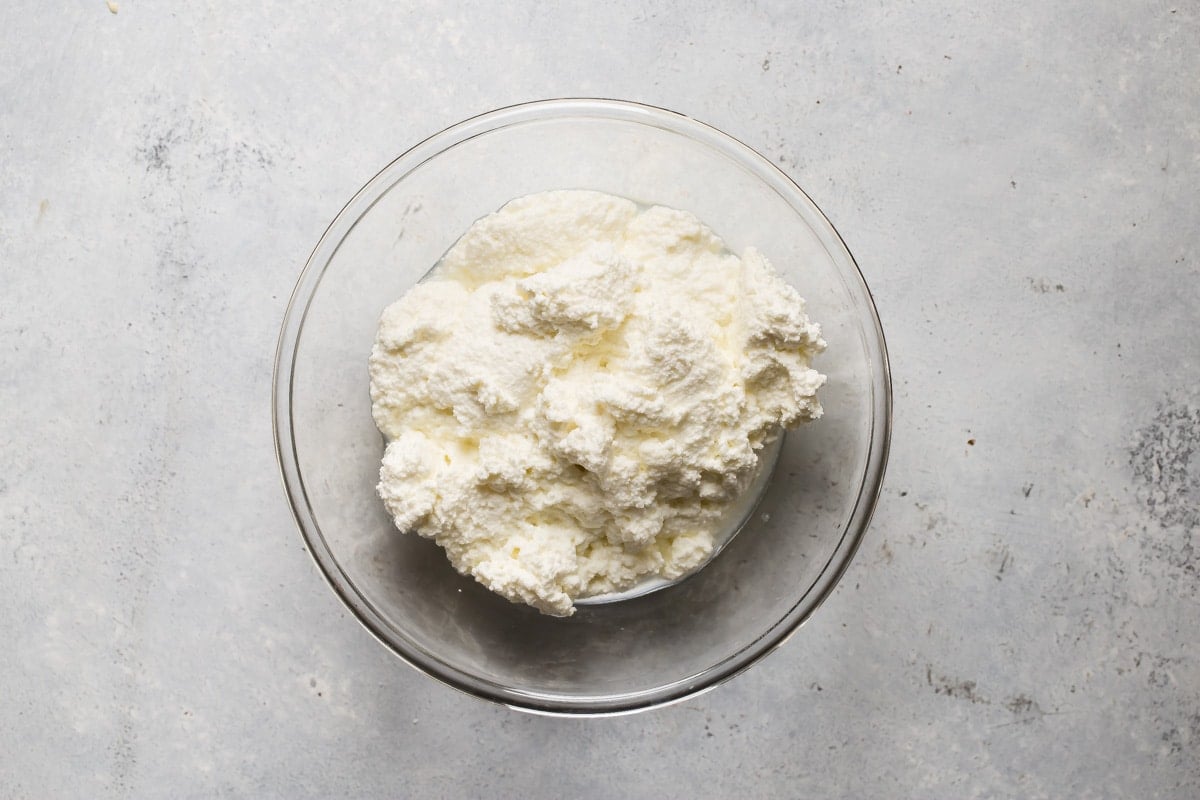
Recipe tips and variations
- Yield: This recipe makes 2 pounds (4 cups) of ricotta cheese, or 32 (1-ounce) servings (2 tablespoons each).
- Storage: Store ricotta covered in the refrigerator for up to 5 days.
- Leftover whey: Add it to smoothies for a protein boost or use it in place of water when making bread and pizza dough (it feeds the yeast).
- Simple spread: Drizzle some fresh ricotta cheese with honey, then sprinkle with toasted chopped hazelnuts. Serve with toasted baguette slices.
- Salt: Substitute 2 ½ teaspoons kosher salt for the table salt.

Put your ricotta to work
Breakfast Recipes
Lemon Ricotta Pancakes
Appetizer Recipes
Spanakopita Triangles
Italian Recipes
Vegetable Lasagna
Cookie Recipes
Pizzelle Cannoli
Join Us

How to Make Ricotta Cheese
Ingredients
- 1/3 cup lemon juice
- 1/4 cup white vinegar plus more as needed
- 1 gallon pasteurized whole milk (not ultrapasteurized or UHT)
- 2 teaspoons Salt
Instructions
- Line a colander with a triple layer of cheesecloth and set in sink. In a liquid measuring cup, combine lemon juice and vinegar.
- In a Dutch oven or large saucepan over medium-high heat, heat milk and salt to 185 degrees. Stir frequently with a rubber spatula to prevent scorching.
- Remove pot from heat and gently stir in lemon juice and vinegar until the mixture curdles, about 15 seconds.
- Let rest, without stirring, until the mixture fully separates into solid curds and translucent whey, 5 to 10 minutes.
- If curds do not fully separate the whey looks milky, stir in 1 tablespoon of vinegar and let sit 2 to 3 minutes longer. Repeat this process until curds separate.
- Gently pour prepared mixture into prepared colander. Let rest, without moving, until whey has drained from edges of cheese but center is still very moist, about 8 minutes.
- Gently transfer cheese to large bowl, keeping as much whey in center of cheese as possible. Stir well to break up large curds and incorporate whey.
- Refrigerate until cold, about 2 hours, or up to 5 days. Stir ricotta before using.
Recipe Video
Notes
- Milk: Use pasteurized (not ultra-pasteurized / UHT) whole milk.
- Lemon juice: Use regular lemons (not Meyer lemons; they don’t have enough acid to curdle the milk).
- Yield: This recipe makes 2 pounds (4 cups) of ricotta cheese, or 32 (1-ounce) servings (2 tablespoons each).
- Storage: Store ricotta covered in the refrigerator for up to 5 days.
- Leftover whey: Add it to smoothies for a protein boost or use it in place of water when making bread and pizza dough (it feeds the yeast).
- Simple spread: Drizzle some fresh ricotta cheese with honey, then sprinkle with toasted chopped hazelnuts. Serve with toasted baguette slices.
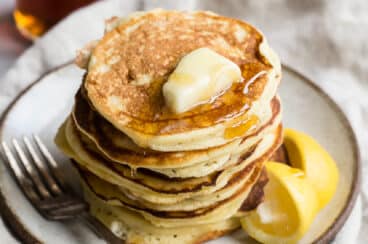

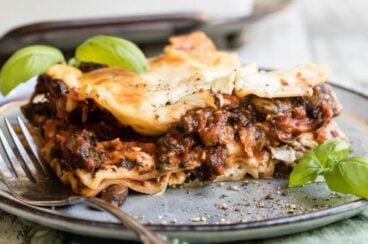
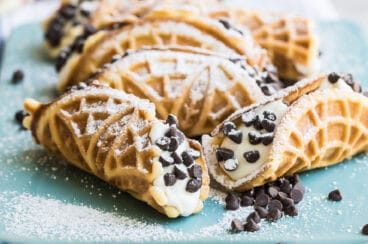
Outstanding for the free gallon of 2% milk that i had. Simple and quick and i ended up with a container of ricotta for a pan of lasagne and etc plus whey to use for maybe a cooker full of rice or crock pot chicken recipe. That remains to be seen but the recipe worked perfectly. Thanks!
You’re welcome, Lynette! Sounds delicious! – Meggan
I made this just as you specified, except I strained the mix using my nut-milk bag. I got a lot less than the recipe stated and it was kind of dry. So I put the curds into my food processor and added some whey back until it was the consistency of store-bought ricotta. It tasted great! I kept the whey to use in other recipes as you suggested. Thanks!
It came out pretty good except for being a little dry and has a lemon flavor. I’m going to make lasagna with it for Christmas dinner. I really hope it doesn’t make it taste like lemon. I’ll keep you updated.
I have no lemon juice. Can I substitute more vinegar?
Hi Geri, you can, however, the ricotta may take on a more vinegar-like flavor. The lemon juice imparts a nice flavor to the finished ricotta. Enjoy! – Meggan
I never imagined making ricotta could be so doable! I made mine and had it in the fridge for 72 hours before making a lasagna. It still spread incredibly well and tasted just like what you get at stores. Can’t recommend this enough!
Thanks Jeff I’m so glad you enjoyed the recipe! – Meggan
So excited to try this recipe! I am a die hard ricotta lover! I am wondering if the bottled lemon juice is ok? Or is the fresh squeezed necessary?
Thank you!
Hi Alissa, bottled is totally fine! – Meggan
Gorgeous recipe! I did wait about an hour to strain my curds because it took that long for the mixture to warm to the touch. It was perfect but since it’s my first attempt I have no idea if this added time made a difference :). Thank you for the clear instructions and the VERY fun discovery that is the ease of making my own ricotta!
Thanks Lou, so glad you liked it! – Meggan
Hi from Toronto Canada. I am keen to give this a try …but need to ask if I can use 1% or 2% milk instead of whole milk?
Hi Anne, thanks for trying this recipe! You can use 1% or 2%, but it will not have the same creamy texture as if you used whole milk. – Meggan
This was much easier than I thought it would be! Tastes delicious!
I’m going to try this today, we have to make a dish for my daughters cooking class. We are making homemade manicotti.
Question, the part above about making ricotta from whey. Is this the leftover whey from the first ricotta process?
Hi Juli, such timing! Thanks for giving this a try. Making ricotta cheese from Whey (as described in the body of post, not in the actual recipe card) is more labor-intensive process that is closer to the way ricotta cheese is traditionally made. You could only do that if you had whey left over from some sort of cheese-making enterprise in your backyard, which you probably don’t (unless you are secretly a cheesemaker!). But the way I put in the recipe card, which is also the way we made it in culinary school, is much easier and the ricotta tastes great. I cannot even tell the difference. It’s just a really easy way to make it. So ignore the part about making it from Whey, and just go by the recipe. Does that make sense? Sorry this was confusing. I’ll try to clarify in the post so no one else is confused. Good luck with your manicotti!!! Thanks Juli! -Meggan